The Most Famous Streets of Paris
It is said that Paris is the city of love, light, and fashion, or it is simply a city of movies. Its streets are famous for their stories, monuments, stores, restaurants, and museums.
The best way to get to know and experience its charms is to explore these streets that treasure its essence.
- You may be interested to read the most famous bridges in France
Eiffel Tower
The Eiffel Tower is one of the most emblematic, most visited, and most visible monuments in Paris. A symbol and a postcard of the city.
Located at Champ de Mars 5, Av. Anatole France, several streets are offered as possible ways to reach it.
The Tower is mainly surrounded by the following avenues: Av. De Suffren, Av. Charles Floquet, Av. Elisée Recius, Av. De la Bourdonnais, Av Joseph Bouvard, Quai Jacques Chirac.
If you are coming from the other side of the Seine, from the Jardins du Trocadéro, you just have to cross the Pont d’léna to access the Tower in all its splendor.

From the Musée d’Orsay and Des Invalides area, you can take Quai d’Orsay, Rue de l’Université, or Rue Saint-Dominique heading west towards the Champ de Mars, where the Tower is located.
Finally, from the Grenelle area, the following streets are offered as possible routes: Quai de Grenelle, Rue Jean Rey, Rue Desaix, or Rye de Presies to the east, until you reach the Champ de Mars.
Read The best Free Tours of Paris and book the one you like the most!
Arc de Triomphe and Champs Elysées
These two wonders perfectly combine urban planning and monuments. And they lead one to the other since the Arc de Triomphe is located at the western end of the Avenue.
The Champs Elysées is the main avenue of Paris, recognizable by its history and beauty.
It is one of the most important arteries of the city, 1910 meters long and 70 meters wide, framed by rows of perfectly aligned trees. An urban paradise.
Along the almost two kilometers of the Champs Elysées you can enjoy the shopping and boutiques located along the avenue. I also enjoy walking outdoors and taking urban photographs.
The Avenue is divided into two parts. The lower area includes the Place de la Concorde and monumental buildings such as the Petit Palais, the Grand Palais, and the Palais de la Découverte. The upper area is the one that leads to the Arc de Triomphe.
The Arc de Triomphe straddles the boundary between Avenue des Champs-Elysées and Avenue de la Grand Armée .
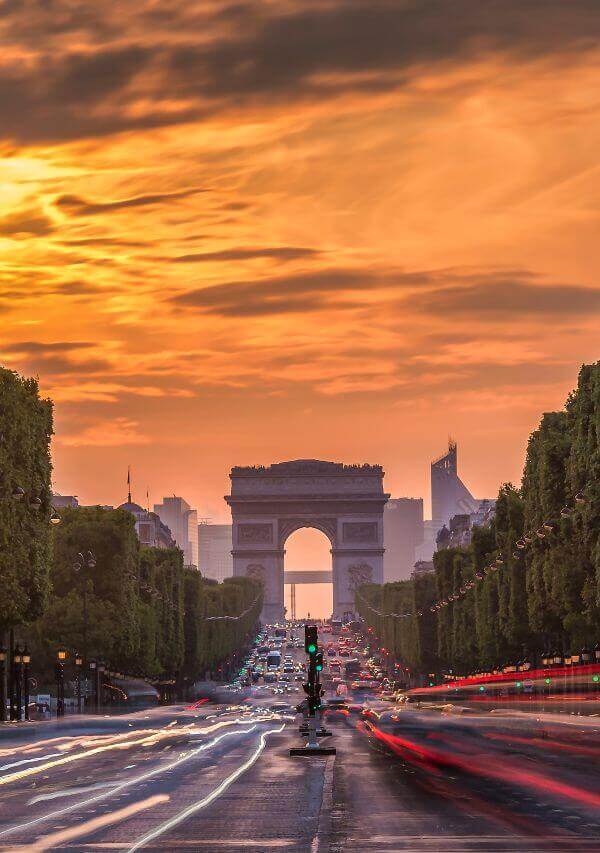
A historic and imposing monument, 50 meters high and approximately 22 meters wide, it was built between 1806 and 1836 by the order of Napoleon Bonaparte himself.
Created to commemorate the victory of Austerlitz, the monument invites to be interpreted. On its facades, you can see various sculptures symbolizing different moments of the French Revolution and names of battles and historical military leaders.
After the facades, at the base of the Arch, you can visit the Tomb of the Unknown Soldier in commemoration of the French who died in the First World War.
Finally, it is also possible to enter the arch and climb a stairway to the top. From there, you can get beautiful views of the city, particularly of the Champs Elysées.
Attention: to access the Arc de Triomphe, it is necessary to go through the subway paths intended for this purpose. They are found in the surrounding avenues and are easy to identify. Crossing in traffic is not allowed and is extremely dangerous.
Rue Montorgueil
Ideal for those who love walking, art and history, Rue Montorgueil combines several charms in the 1st and 2nd arrondissements. It is a mixture of different periods and monuments that invites you to immerse yourself in each corner.
The enchantment is produced by its historic cobblestones mixed with its pedestrian center and the atmosphere of its restaurants and terraces. Also, its character as an artistic icon is represented both in the visual arts and in literature.
Rue Montorgueil appears in paintings by Claude Manet (1878) and Auguste Lepère (1894) and in books such as “Les Miserables” by Victor Hugo. It is also the setting for films such as “The Time of Lovers” (2013) and “Suddenly, Paradise” (2019).
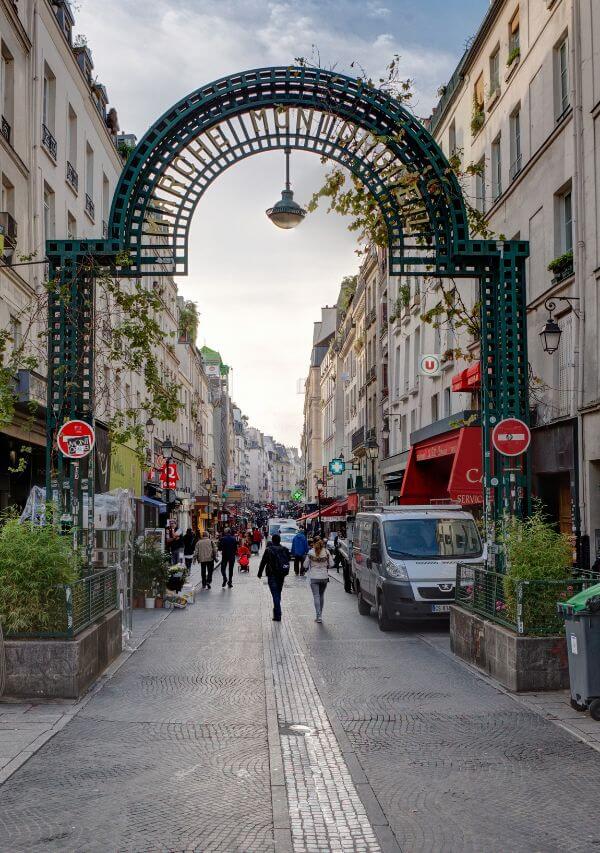
In its extension, it is possible to find several remarkable restaurants, historical monuments, and outstanding buildings. Among the former, are the restaurant L’Escargot Montorgueil at No. 38, and the Stohrer pastry shop (founded in 1720) at No. 51.
Among the historical monuments of particular interest are the Histoire de Paris panel at number 73, as well as Le Rocher de Cancale at number 78, and the groups of buildings from number 15 to 19 of the street.
Rue Cler
Continuing with the pedestrian streets, cobblestones and gastronomic promenades, Rue Cler offers a delightful atmosphere. Close to the Eiffel Tower, it features a wide variety of food stores, flower shops, cafes, pastry shops, butchers, fishmongers, and chocolatiers.
The offer of food stores is very varied and select. The products are of excellent quality. There you can find cheeses and typical wines to pastries and handmade chocolates.
As for its architecture, several art nouveau buildings can be appreciated.
Read more: What to see in Paris in winter
Montaigne Avenue
Exclusive, the Avenue Montaigne connects the Champs Elysées and the Pont de l’Alma and boasts the most luxurious stores in the city. Jewelry, haute couture, and fashion find their place in the world. This street shines with its stores.
Some brands to visit on this street are Céline, Vuitton, Loewe, Christian Dior, Chanel, Gucci, Prada, and Bulgari, among others. The street is, literally and figuratively, a jewel.
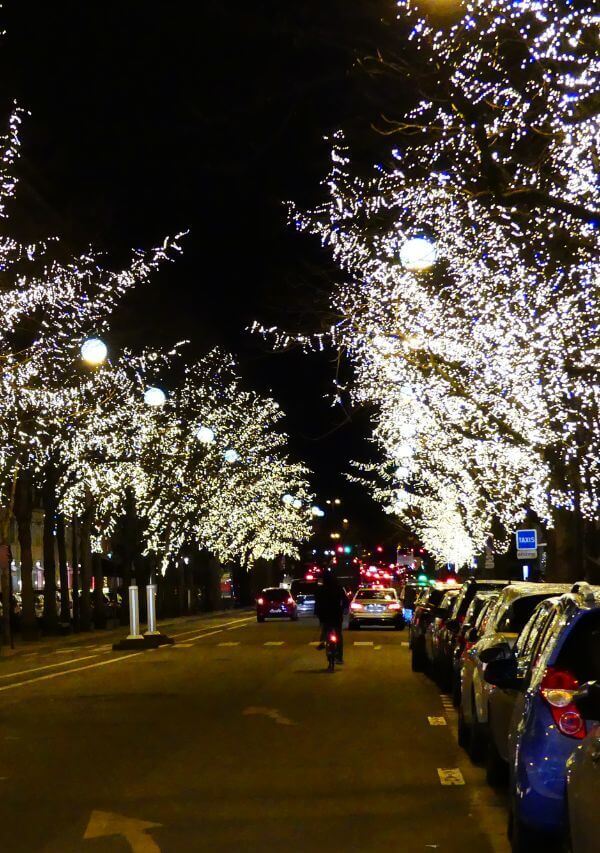
In addition to jewelry and haute couture, Avenue Montaigne features the Champs Elysées Theater at number 15 and the Canadian Embassy at number 35.
Avenue Victor Hugo
In the 16th arrondissement, Avenue Victor Hugo connects Place Charles de Gaulle with Avenue Henri-Martin. It covers almost two kilometers and is one of the most prestigious Parisian avenues.
Among the attractions of Avenue Victor Hugo are the private buildings and hotels built by Pierre Humbert at numbers 122, 124, and 167. Also of interest, at number 179, is the Art Nouveau building designed by Paul Robine.
On the other hand, the avenue has an undeniable historical-literary aura. Victor Hugo, the author of “Les Miserables,” lived in the hotel at number 50 on this street that today bears his name. A sculpture of his face can be seen on the façade.
Charles de Gaulle Square
Formerly called Place de l’Etoile, the Place Charles de Gaulle is distinguished and recognized for having the Arc de Triomphe in its center and culminating the Avenue des Champs Elysées.
This square is divided between the city’s 8th, 16th and 17th arrondissements along the avenues Wagram, Marceau and Grand-Armée.
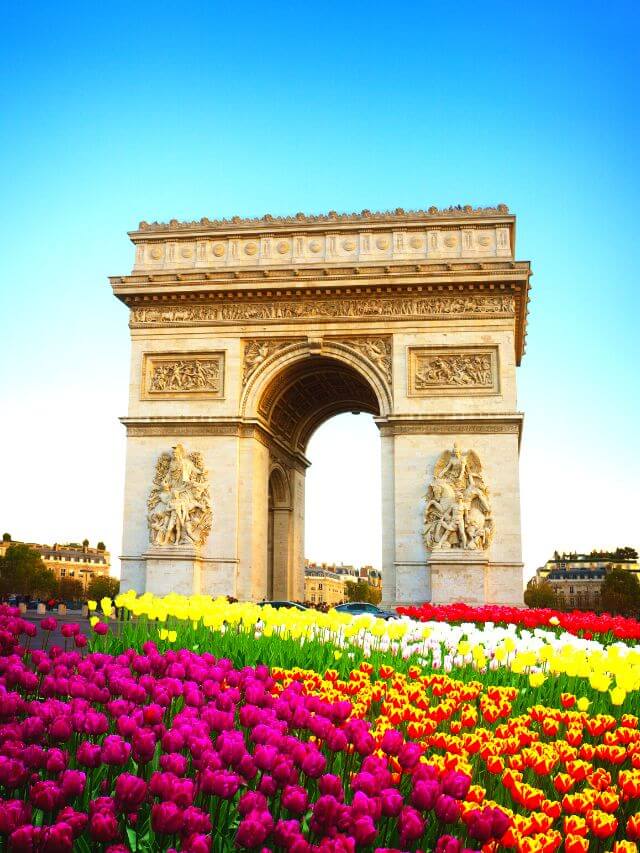
Its diameter is approximately 240 meters, making it the second largest in Paris after the Place de la Concorde.
It also contains literary references: Nobel Prize winner Patrick Modiano published his novel “The Place of the Star” in 1968.
RECOMMENDATION: Tour the Arc de Triomphe area and the Eiffel Tower with a free walking tour.
Rue Lepic
History, art, painting, poetry, cinema: you can pass through different arts while walking along the same street. Located in Montmartre, in the 18th arrondissement, Lepic stretches from Boulevard de Clichy to Place Jean Baptiste-Clément and holds many stories of life.
Artists of all periods and disciplines resided there. At number 54, the brothers’ Vincent and Théo Van Gogh lived from 1886 to 1888. In 1992, the writer Louis-Ferdinand Céline. Jean Rictus and Forain are other artists who resided there.
The street has the old charm of the cobblestone, the curved line, and the steep route. Framed by narrow sidewalks and lanterns from another time, it invites you to walk and travel.
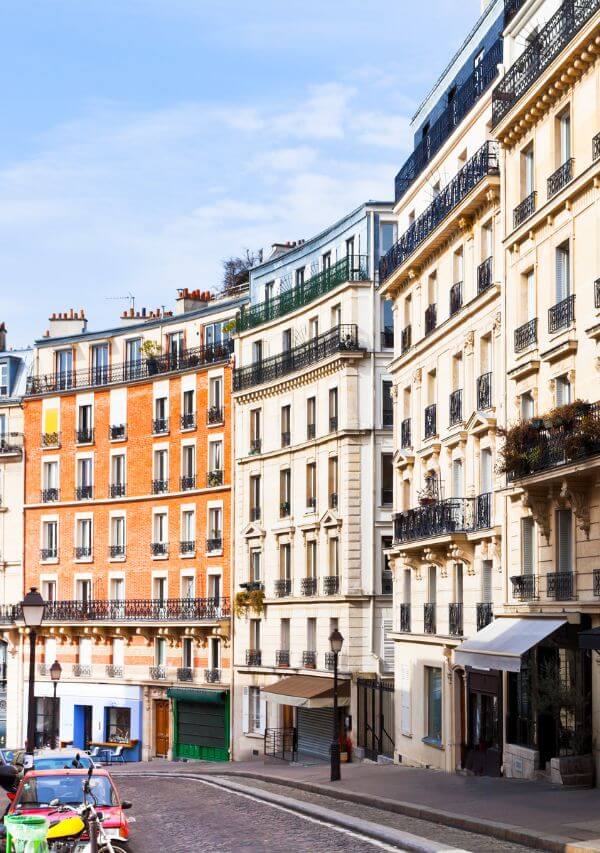
RECOMMENDATION: book a free walking tour of Montmartre to visit the whole area and learn much more about the city.
Notre-Dame de Paris
The Cathedral of Notre Dame de Paris, located on the Ile de la Cité in the 4th arrondissement, is an emblem of Paris and a dream and must-see for tourists in the city.
It is one of the oldest Gothic cathedrals in the world and is part of the World Heritage Site.
Its construction started in 1163, lasted almost two centuries, and was modified throughout its subsequent history. It presents numerous attractions on its exterior as well as in its interior. It also allows you to marvel at the architectural evolution throughout its history.
Thus, the gargoyles and Gothic terminations of the XII and XIII centuries coexist with the features of the baroque architecture of the XVIII century. The Romanesque and Norman styles can also be appreciated in a series of decorations and details of singular beauty.
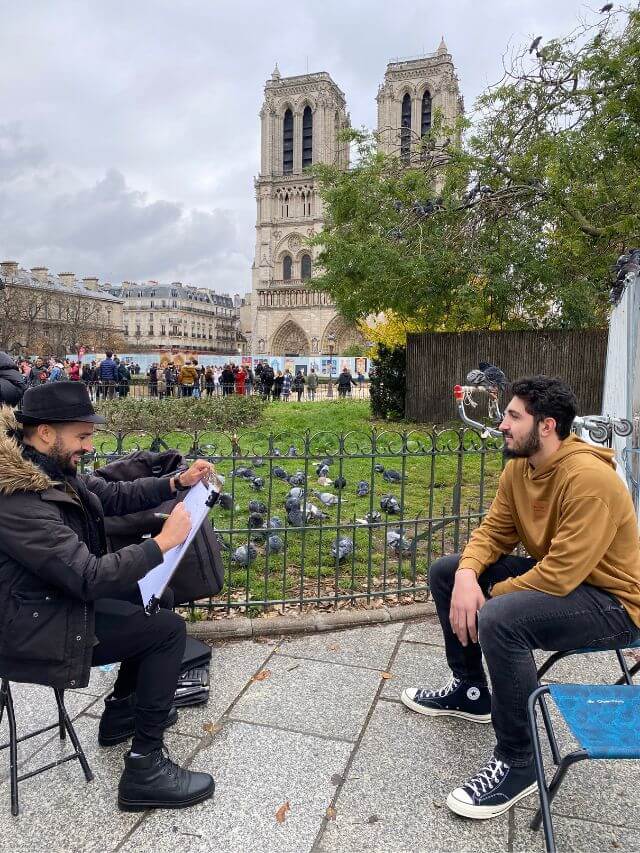
In literature, Victor Hugo’s Notre Dame de Paris (1831) gave this cathedral the fame it deserves. It tells the story of Quasimodo, the gypsy Esmeralda, and other characters of 15th-century Paris that gave rise to many films.
Among his film appearances, the following films stand out:
- Hunchback of Notre Dame (1996)
- Ratatouille (2007);
- Before Sunset (2004)
- Notre-Dame is burning (2022)
- Hugo (2011)
- The House of Jack (2018)
- Breathless (1960)
Of course, it is no coincidence that the visual arts return again and again to Paris in general and to Notre Dame in particular.
Its perfect structures, rich history, and multiple meanings make it an ideal place to immortalize on screens.
Rapp Avenue
Rapp Avenue runs from Place de la Resistance to Place du Général-Gouraud. The Pont de l’Alma station on line C of the RER is a central transfer point.
This Avenue has one of Paris’s most beautiful and representative Art Nouveau-style buildings.
Located at number 29, in the 7th arrondissement, is the Lavirotte building, an icon of Art Nouveau, with a complex architecture built with different materials.
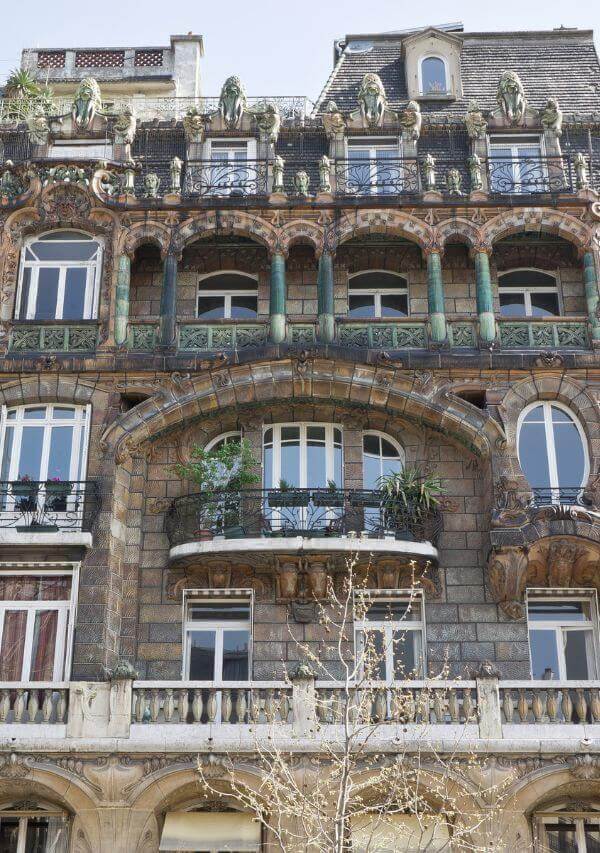
Other historical monuments can also be visited. For example, at number 23, you can find a pharmacy dating back to 1905. Its interiors preserved the original woodwork and were declared a historical monument in 1985.
Finally, numbers 1 and 33 show the embassies of Bulgaria and Luxembourg, respectively.
Rue des Rosiers
The Rue des Rosiers, translated as “street of rose bushes,” anticipates in its name the splendor of its charm. The cobblestones, the tranquility that differs from the general rhythm of the city, and the decoration of flowers and lanterns make it worthy of a dream walk.
In addition to the beautiful atmosphere, it offers, in the Rue des Rosiers you can take advantage of the opportunity to eat pastries and Jewish restaurants and visit minimalist stores of famous fashion brands.
There are also designer stores and thrift stores in a very cozy atmosphere.
Located in Le Marais, in the heart of the Jewish quarter, this urban oasis of calm, food, and fashion stores is a must for those looking to eat, stroll and shop. The Saint-Paul Metro Station is located there.
Rue de l’Université
Rue de l’Univesité, in the 7th arrondissement: a must-see. The street runs parallel to the Seine, perpendicular to the Boulevard Saint-Germain, close to the Invalides area, the Eiffel Tower and Avenue Rapp.
Its history dates back to the 12th century when the University of Paris acquired the land located near the Seine. Along the way, you can appreciate beautiful architecture from different periods.
Thus, the view of the Eiffel Tower in the context of architecture and atmosphere is a must-see.
Along the street, you can see the facades of numerous historical monuments. For example, the Music Conservatory, located at number 135, or the building in which the artist Auguste Rodin had an atelier, at number 182, among many others.
Rue de l’Abreuvoir
Located in the 18th arrondissement, this street is characterized by its fairy-tale atmosphere to walk along following the dome of the Sacre Coeur and appreciating the facades of its historic buildings.
Narrow, and cozy, the Rue de l’Abreuvoir holds treasures such as the Maison Rose at number 2, the Place Dalida, or the Cadran Solaire at number 4.
Its history dates back to the 14th century. Its intimate atmosphere makes it one of the city’s most beautiful corners.
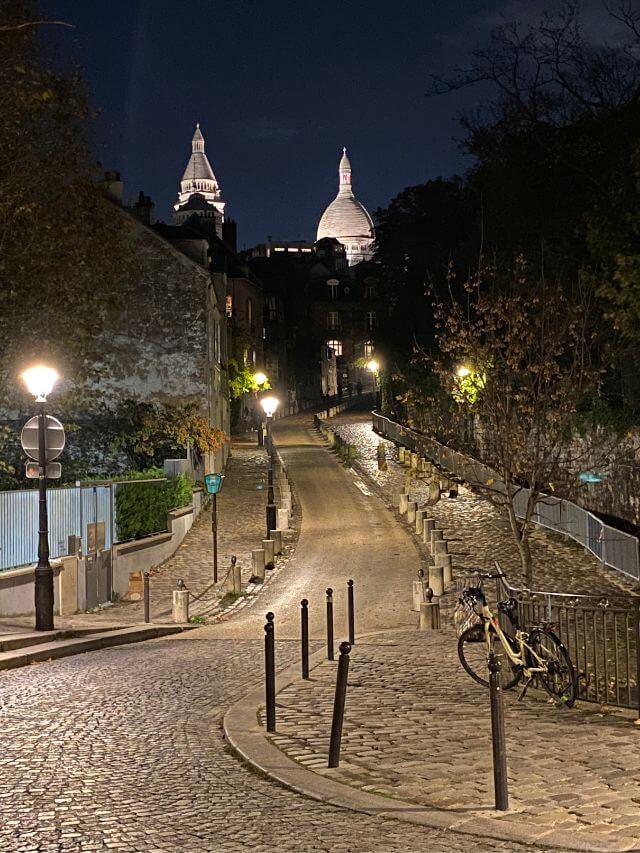
Rue Mouffetard
Another street that invites you to explore its history and present, is originally a Roman alley. Its cobblestones and pedestrian character allow us to appreciate that history. It is very attractive for eating and strolling through its wide gastronomic offer.
Located near the Panthéon, this street is home to the market called La Mouffe by the locals. One of the best known in the city.
There are butchers, bakeries, fishmongers, cheese shops, wine stores and pastry shops. A gastronomic must.
The writer Ernest Hemingway lived and walked near this street, at 74 Rue Cardinal Lemoine, where Rue Mouffetard divides. The charm of the Belle Époque is breathed in this street.
Rue Crémieux
Pedestrian and cobbled, with an almost secret intimacy, the Rue Crémieux is one of the most famous streets of Paris and one of the most beautiful, it is located in the 12th arrondissement, in the Quinze-Vingts district.
Its history dates back to the 19th century, precisely to 1865. It is pedestrian since 1993.
Its buildings are known for their colorful facades that combine all kinds of colors. Ideal destination to walk and enjoy the multicolored beauty and to take original photographs.
If you are going to take pictures, please respect the privacy of the people who live in this street.
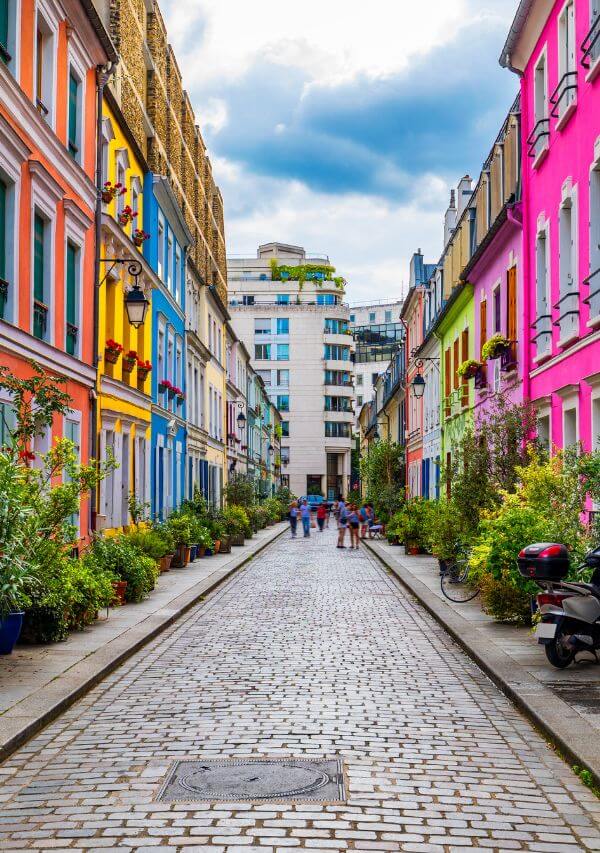
Rue des Barres
This street has the special power to transport us to the Middle Ages. Pedestrianized, it invites you to relax in its quiet village and cobblestones. The history of Rue des Barres dates back to the 13th century.
Located in the 7th arrondissement, among the attractions of this street are the bistros and terraces ideal for a drink or snack, rest and recharge your batteries.
Nearby is the church of Saint-Gervais, whose stained glass windows are of incomparable beauty.
Rue Saint Dominique
Also in the 7th arrondissement, Rue Saint Dominique dates back to the 14th century. It has changed its name many times in its history, but its atmosphere remains intact. It is a quiet, traditional street.
Official buildings and the presence of the St. Thomas Aquinas Church make it a point of interest that culminates at the Invalides.
Rue Norvins
In the heart of Montmartre, Rue Norvins connects Place des Abbesses to Place Saint-Pierre. Filled with cafes and terraces, stores and galleries, it is a typical postcard of the neighborhood and its artistic atmosphere.
Narrow, cobblestone, bohemian, this street is one of the most visited in Montmartre.
There are many historic buildings, such as the house of the artist Marguerite Bermond at number 24 and the Fontaine du Château d’eau de Montmartre, at number 9 bis, in neo-Gothic style.
Rue Vieille du Temple
Ideal for shopping lovers. Along this street you can visit fashion stores as well as small stores of young designers, jewelry stores and art galleries.
There are also plenty of typical cafés and brasseries, such as Le Progress, to rest between so many attractions.
Boulevard de Clichy
Traditional and typical Parisian boulevard, famous for the paintings of Van Gogh and Signac that are titled with its name.
In this street you can enjoy a typical postcard of the French capital and appreciate many historic buildings, such as the Théâtre des Deux Anes, the cité Veron, the monument to Charles Fourier or the place Pigalle.
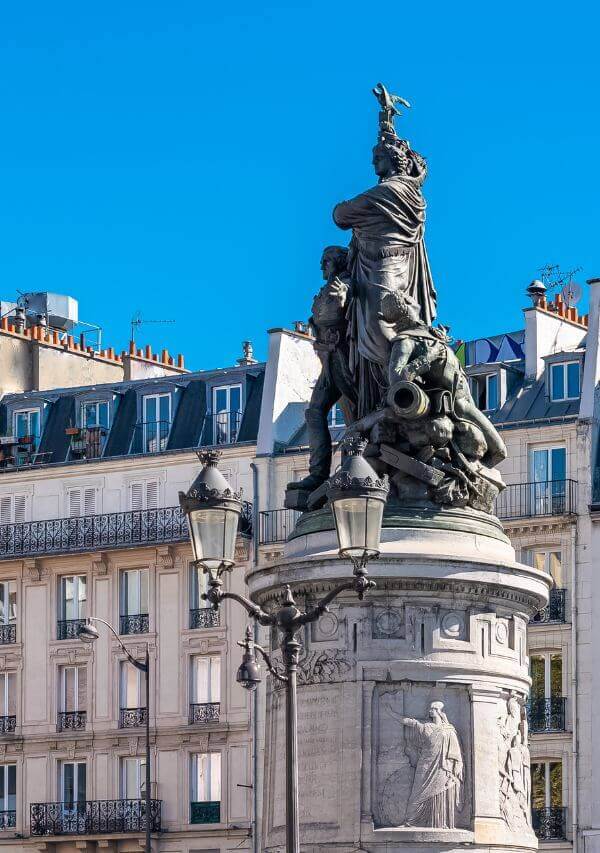
Place Vendôme
Historic square in the center of Paris, near the Tuileries Garden. It dates from 1810, built by order of Napoleon.
It is one of the most famous streets in Paris for being surrounded by Parisian luxury and for being the place where the musician Chopin died. During the French Revolution, it was called “Square of the Spades”.
During the Commune, it was called “International Square”. Around it, jewelry stores abound. What’s more, in this square, there can only be jewelry stores!
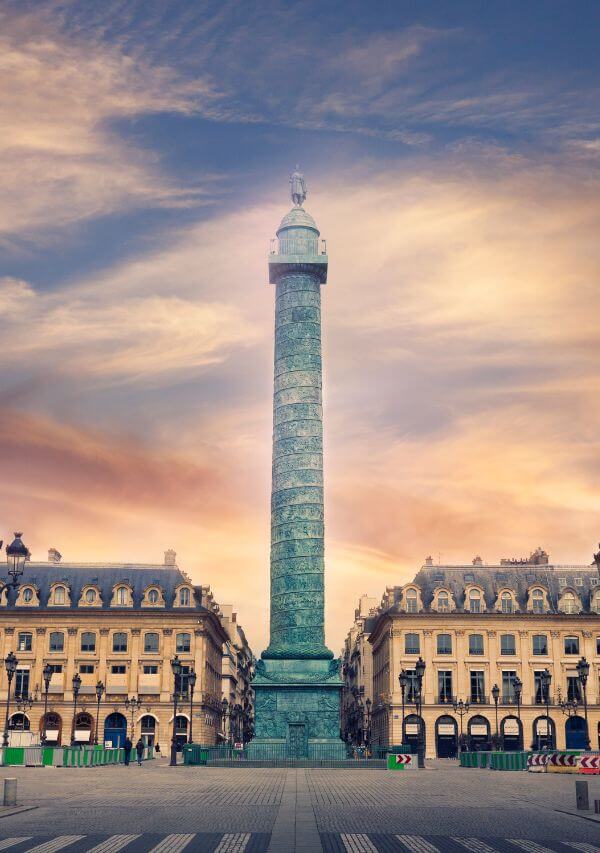
Rue Lamarck
In the 18th arrondissement, this street runs from Montmartre to Avenue Saint-Ouen. It offers wonderful views of the city from its summit, as well as beautiful scenery on its steps.
Among its points of interest are the Hermitage Sacre-Coeur Hotel, with its frescoes at number 24, and the home of the painter Asselin at number 39.
Rue des Martyrs
In the heart of the Pigalle district, this street offers many traditional and typical Parisian stores, of which there are few left. Colorful businesses during the day and lively nightlife after sunset.
Narrow and busy, it goes from Notre Dame de Lorette to the Sacre-Coeur in Montmartre. Frequented by Parisians shopping there, it is a must for appreciating the local atmosphere.
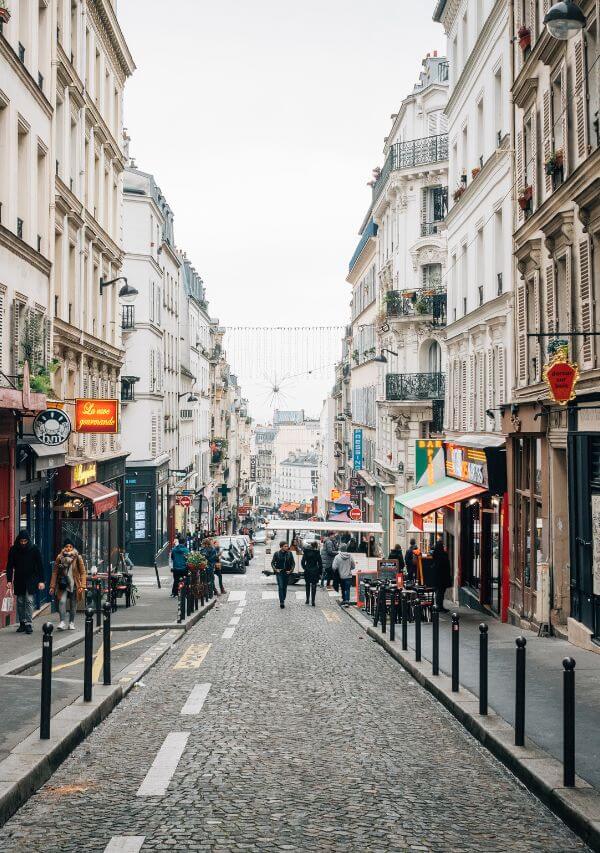
Boulevard Haussmann
One of the most exclusive and elegant boulevards in Paris. It crosses the 8th and 9th arrondissements and runs from Avenue de Friedland to Boulevard Montmartre.
Among its many historical attractions are the house of Marcel Proust at number 102, the Opéra Garnier, the Galeries Laffayette, the Printemps department store and the Jacquemart-André Museum. The facades of the buildings invite you to take pictures.
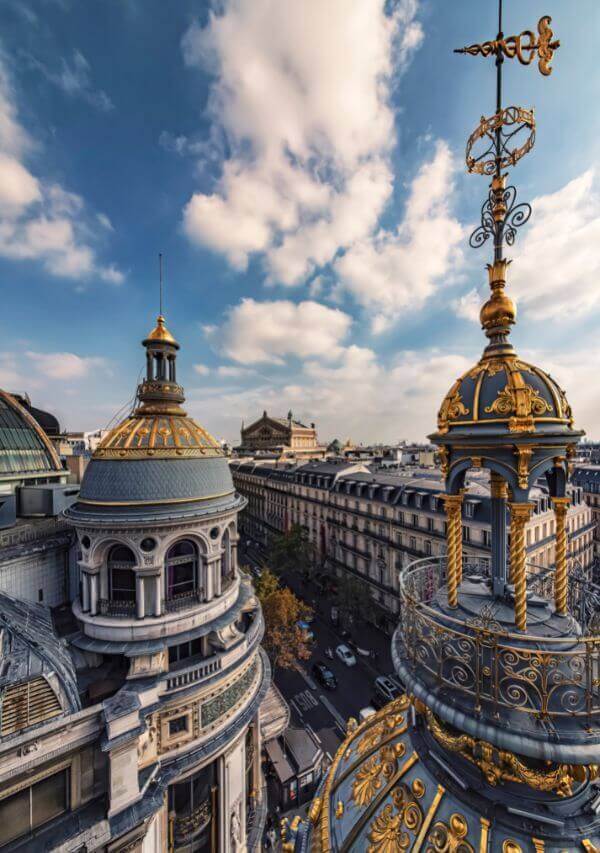
Rue Saint Rustique
In the 18th arrondissement, this street was the first pedestrian street in Paris declared in 1973. It is the oldest street in Montmartre, with practically no sidewalks, where houses and cobblestones coexist in a direct way. Its historical charm is undeniable.
At 18 Rue Saint Rustique is the building of the restaurant La Bonne Franquette, where Charles Aznavour lived during the 1950s.
Avenue de Camoëns
Located in the 16th arrondissement, it is one of the avenues with the best views of the Eiffel Tower. Among its points of interest are the monument to the poet Camoens and the facades of typical Parisian buildings.
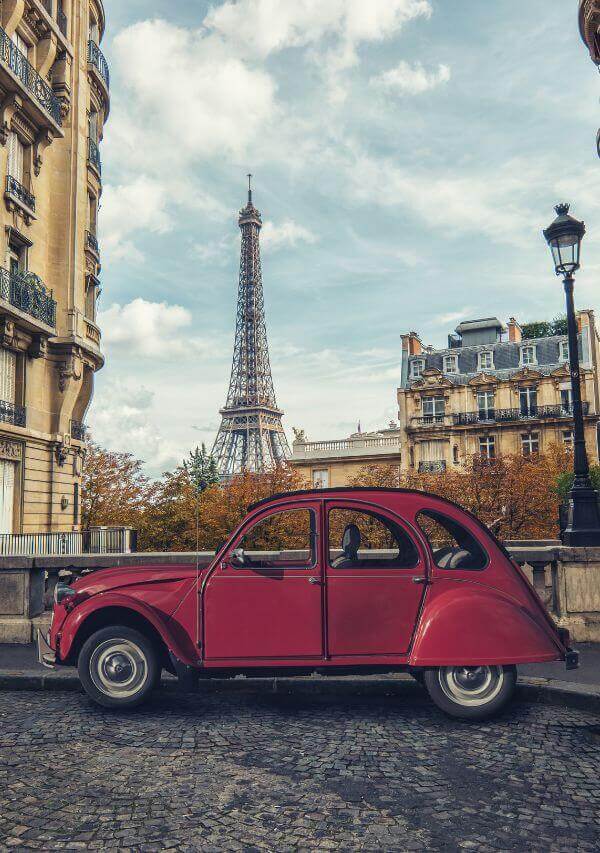
Rue Denoyez
A brief, intense street, a crossroads of cultures. Graffiti coexists with traditional architecture and ethnic restaurants of diverse cultures, especially oriental.
It is an ideal spot to take pictures and taste food from other regions. Multicultural and colorful.
Rue Nicolas Flamel
In the 4th arrondissement, this narrow cobblestone street dates back to the 13th century. His name is due to the fact that he lived there Nicolas Flamelon the corner of Rue des Écrivains.
I recommend you to take the free tour of mysteries and legends to learn more about the legend behind Nicolas Flamel, the famous alchemist of Paris.
Full of cafes and restaurants, it is ideal to recharge your batteries in a different atmosphere near the Pompidou and the Chatelet Station.
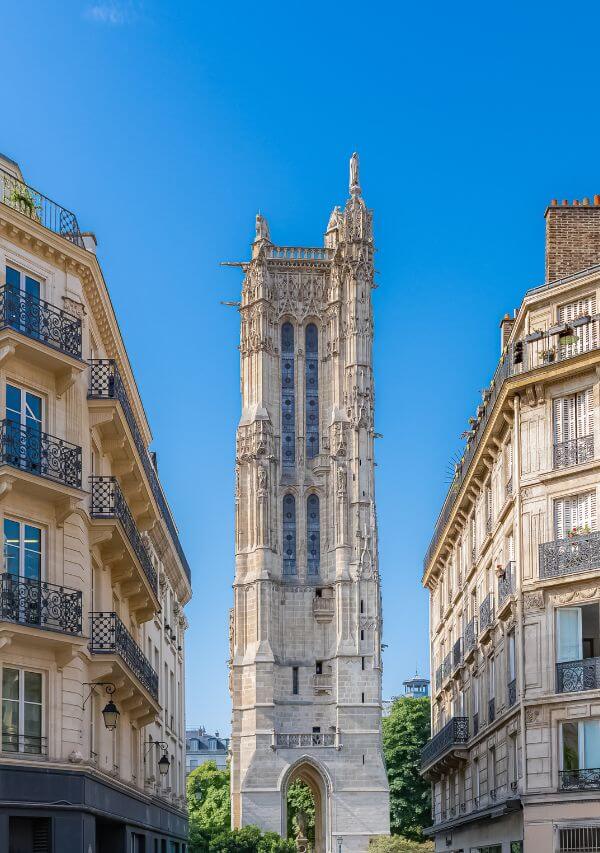
Rue Saint Dominique
From Boulevard Saint-Germain to Place du Général-Gouraud, this street established in 1631 is noted for its many historic buildings.
Among them, the Chateubriand house at number 27 and the fontaine des Invalides at the intersection with Avenue Maréchal-Gallieni.
Plan Your Trip to Paris
- Visit the Museums of the 16th District of Paris
- What to wear in Paris according to the season of the year
- The best Free Walking Tours in Paris
- Impressionist museums in Paris
- How to visit Versailles on your own or with tour

This post may include affiliate links. This means that we will receive a small fee if you make a purchase through our links. It has no additional cost to you. It’s a win-win!
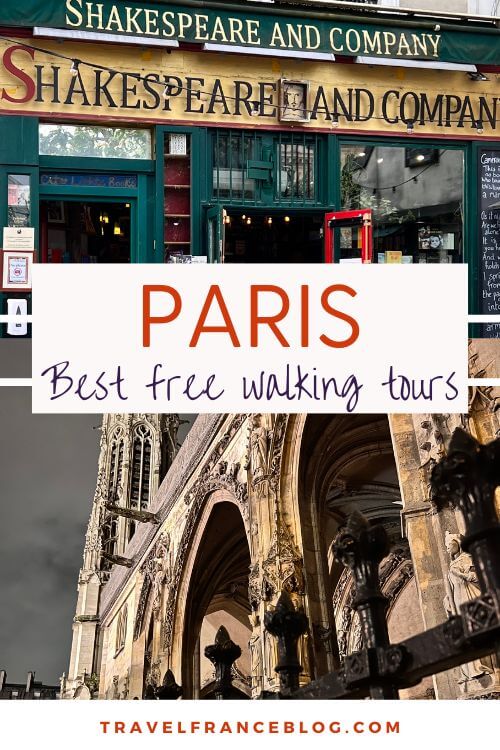
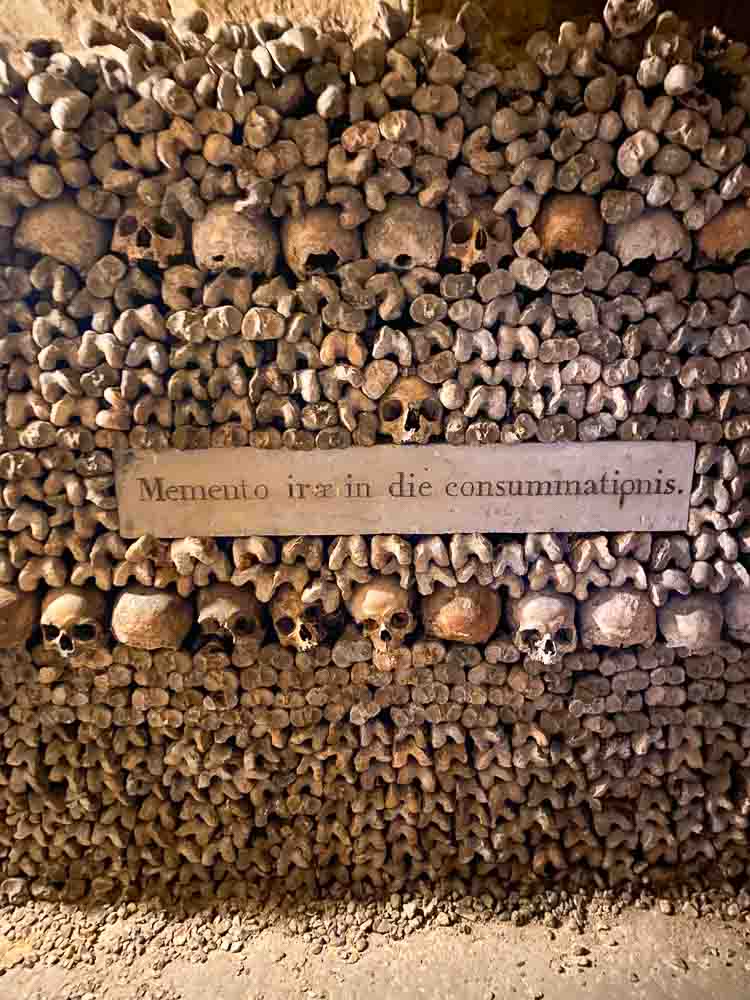
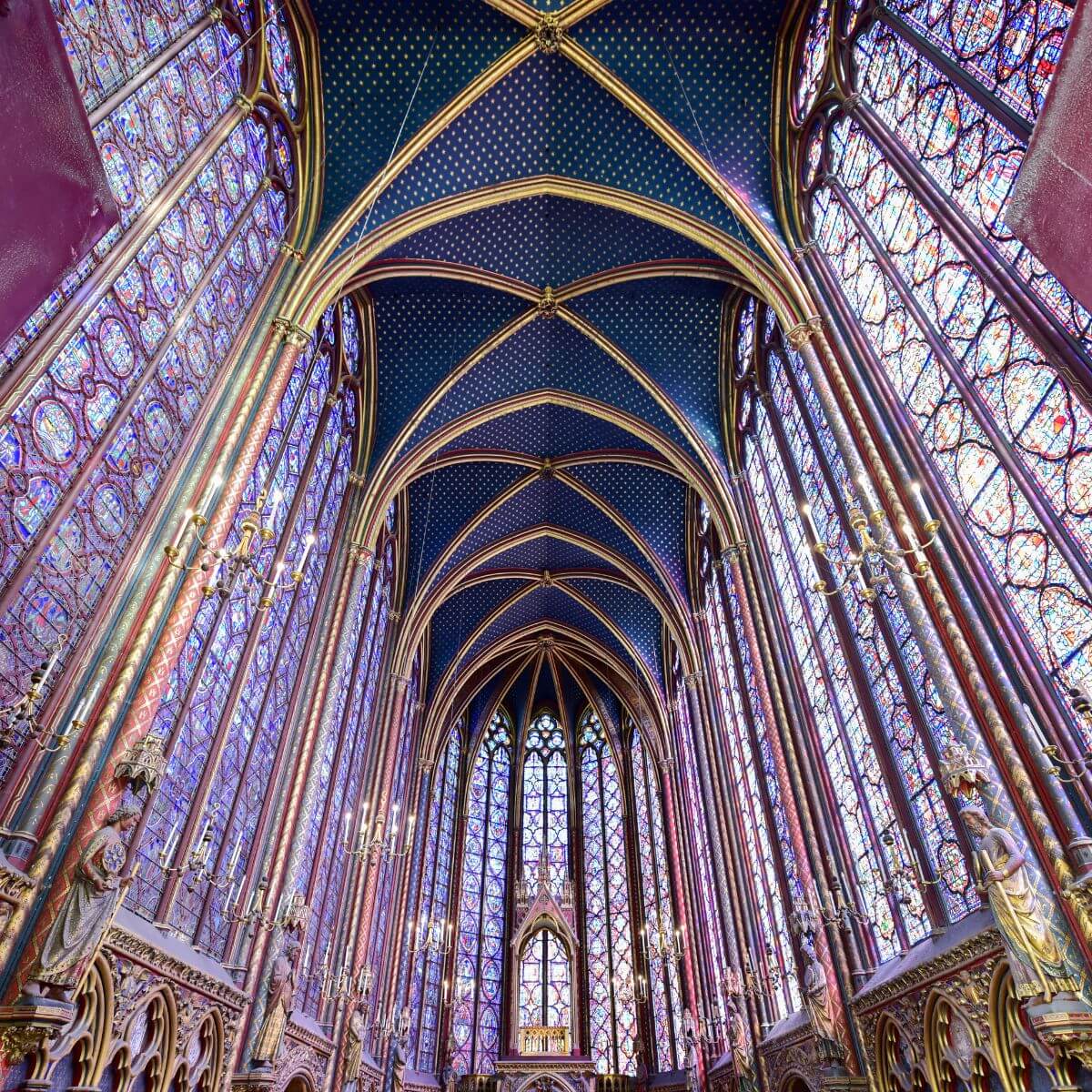
![► The Ultimate 7-Day Paris Itinerary [For Your First Trip]](https://travelfranceblog.com/wp-content/uploads/2023/01/paris-best-7-day-itinerary.jpeg)

